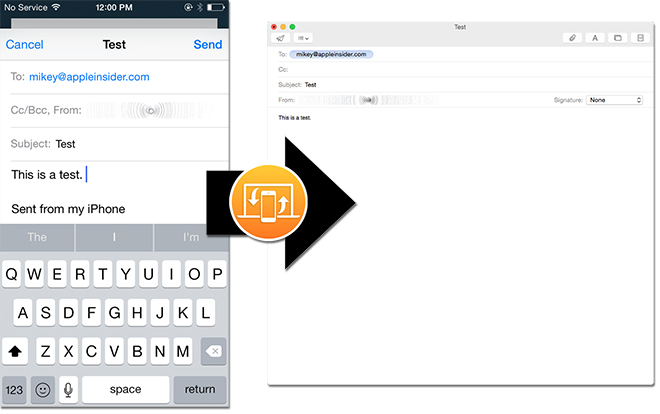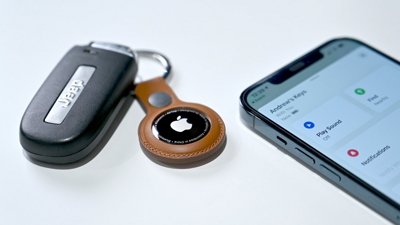OS X Yosemite first look video: Handoff
One of the more exciting features shown off at this year's Worldwide Developers Conference was Handoff, a piece of technology that lets OS X Yosemite recognize what a user is doing in an iOS 8 app and seamlessly transfer that action to Mac.
Handoff is one of four tentpole features — alongside SMS, phone calls and Instant Hotspot — in Apple's next-generation OS X and iOS operating systems the company is collectively referring to as "continuity." Baked in to OS X 10.10 Yosemite and iOS 8, continuity features let Macs recognize actions on nearby iOS devices to enable a new level of integration and cross-platform connectivity.
With Handoff, a Mac running OS X 10.10 Yosemite will monitor for iOS 8 devices via Bluetooth. Tying in iCloud as a registration backbone, OS X doesn't need to pair with an iPhone or iPad to log it as a viable target device, making the proximity-aware feature utterly seamless for users with properly configured Apple IDs.
Once the Mac establishes a connection with the iOS device, it appears to enter a low-power "listening" mode until an appropriate call signal is received. As seen in the video above, the iPhone sends out a call whenever a Handoff-capable app is opened, which in turn invokes an icon of the corresponding OS X version of the app to appear next to the Mac's dock.
Clicking on the Mac-side pop-up opens the app and transports the user's most recent action data from the iOS device. For example, users can start reading a webpage on an iPad and pick up where they left off on the Mac.
In the video, we demonstrated this "last action" transfer with Safari and Maps. While Safari took us to the relevant webpage, Maps was more granular in its assessment of most recent iOS device activity and navigated to the correct area and zoom level last displayed on our iPhone.
We also tested the feature with Mail, which returned a new message window with all data fields filled down to the last letter typed. Similar results were found with all supported apps, including Pages, Numbers, Keynote, Messages, Reminders, Calendar, and Contacts.
It should be noted that the feature was working only from iOS to Mac at the time of this writing, but Handoff should be completely two-way compatible at launch. When a Mac sends an appropriate call to a listening iOS device, a small icon of the app is displayed on the iPhone or iPad's lock screen. Swiping up on the icon will take users to the last action performed on the Mac side.
Looking more closely at the tech behind Handoff, we found the setup to be similar to AirDrop, which seeks out nearby devices via Bluetooth and transfers files over a higher-bandwidth ad-hoc Wi-Fi connection. With Bluetooth turned off, our Mac was not "aware" of the nearby iPhone and opening supported iOS apps would not trigger the Handoff mechanism.
Even in its beta form, Handoff is an impressive feature that fits seamlessly into Apple's multi-platform software environment. Further, Apple has provided the appropriate APIs to third-party developers so they can integrate Handoff in their own apps, opening the door to a completely connected ecosystem of Mac and iOS apps.
Aside from a few connectivity issues that required us to toggle our iPhone's Bluetooth on and off, Handoff worked as demonstrated on stage at WWDC by Apple SVP Craig Federighi. By the time Apple's next-gen operating systems hit the App Store this fall, the feature should be ready for action.
For more information on Apple's new push in cross-platform integration, see AppleInsider's hands-on iOS 8 videos.
 AppleInsider Staff
AppleInsider Staff











 Andrew Orr
Andrew Orr
 William Gallagher
William Gallagher

 Mike Wuerthele
Mike Wuerthele
 Christine McKee
Christine McKee

 Malcolm Owen
Malcolm Owen
 Amber Neely
Amber Neely







